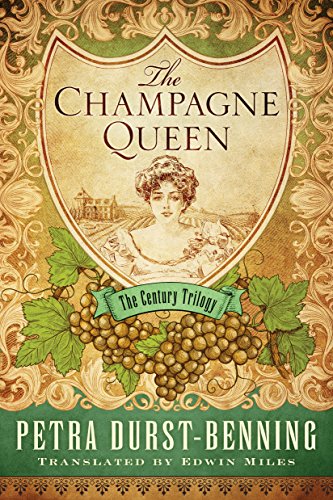The Champagne Queen: The Century Trilogy, Book 2
“You were raised to marry, not to peel potatoes.” Isabelle recalls her mother’s dictum. Although wedded to her true love, cyclist Leon Feininger, she’s now peeling potatoes in her in-laws’ dilapidated farmhouse. Born to a prosperous Berlin family, she had met Leon in 1897. Following a whirlwind romance, they’d married, despite her parents’ vehement objections, and moved to Leon’s family vineyard in the Palatinate. However, life on the farm was nothing like Leon had indicated. The visions of grand rural landscapes depicted in paintings soon evaporated from Isabelle’s mind, and being alone all day, she verged on depression. An inheritance from Leon’s uncle of a vineyard in nearby Champagne thrills the couple. Rejuvenated, Isabelle sets about decorating their new home and resurrecting champagne production. With limited staff, and Leon still involved in bicycle racing, it’s an uphill battle that includes overcoming local hindrances. However, following a tragic incident, Isabelle has to take charge of the estate and even seek help from her two girlfriends from Berlin.
Although this is the second book of Petra Durst-Benning’s Century Trilogy, it can be read as a stand-alone. While the first had featured one of her childhood friends, Josephine, this novel is Isabelle’s story. The excellent English translation provides interesting insight into the pre-WWI era and life in the wine-producing regions at the German-French border. Women’s struggles for greater independence and a voice in business and political matters are vividly portrayed. The story depicts not only the work-related and romantic issues faced by couples but also the tremendous knowledge and toil necessary in growing and harvesting grapes and producing and marketing champagne. This absorbing novel keeps us reading about Isabelle’s fate.










